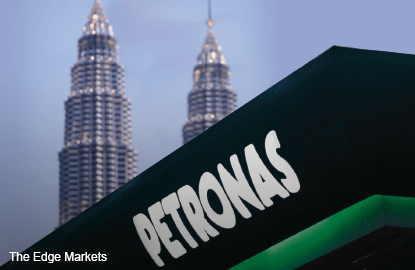
PETROLIAM Nasional Bhd (Petronas) is having difficulties meeting its dividend payment and capital expenditure (capex) pledge, group CEO Datuk Wan Zulkiflee Wan Ariffin said at a recent press conference to release the national oil firm’s second-quarter earnings results, which showed a big fall in profit.
He warns that Petronas may not be able to generate sufficient cash to cover its capex, for which it has budgeted RM70 billion this year, or pay RM26 billion in dividends to its sole stakeholder, the federal government.
Petronas’ capex is significant to the domestic oil and gas industry, as many local players depend on it for their job flow.
“In fact, I do not expect our cash flow from operation this year to meet our capex and dividend commitments because we simply do not foresee a reprieve from the low oil prices in the near future. This means we will have to persevere with more strategic measures and draw on our cash reserves,” says Wan Zulkiflee. He notes that crude oil prices have recently resumed their downtrend, dipping below US$50 per barrel.
The slump in crude oil prices has taken a toll on Petronas’ earnings. Its profit after tax plunged 47% to RM11.1 billion in the second quarter ended March 31 (2QFY2015) from RM21.1 billion in the previous corresponding period. Revenue dropped 28% to RM61.3 billion from RM85.4 billion. The fall would have been bigger if not for the weakening ringgit.
In the first half of the year (1HFY2015), Petronas’ net profit took a 43% dip to RM22.5 billion from RM39.8 billion in the previous corresponding period. This was on the back of a 25% decrease in revenue to RM127.5 billion from RM169.4 billion.
Apart from lower crude prices, lower liquefied natural gas (LNG) prices were also a factor in the decrease in earnings. In 2QFY2015, the average price of Brent Crude was US$62 per barrel while for LNG, the average price of Japan Crude Cocktail was US$57 per barrel.
Wan Zul points out that all this while, Petronas has been able to keep afloat because of its prudent cash management, which translates into financial resilience. “But moving forward, we will no longer have this luxury,” he says.
Many are surprised that in the first quarter, Petronas had already committed to total annual dividends of RM26 billion despite the volatile crude oil prices. In fact, the national oil firm has already paid half of the sum to the federal government.
Group chief financial officer George Ratilal explains that Petronas works like any other international oil company (IOC) although it is state-owned.
“As an oil company, we are expected to pay dividends and the kind of dividends we are paying is not unreasonable. If you were the government or the government were any other shareholder, you will expect just as much.
“I think a company has to plan to balance all kinds of forces, shareholder requirements as well as capex. That is how you discipline yourself, you know. Why should you be treated any differently from any other company or any other shareholder? We have done that,” says Ratilal, adding that the national oil firm could always raise fresh capital from the debt market to address any shortfall.
As at June 30, 2015, Petronas’ total reserves stood at RM362.4 billion while gearing stood at 15.6% — a 12.6% increase from Dec 31, 2014.
“In the case of the RM26 billion dividends that we are paying this year, that is roughly about 50% to 60% of last year’s profit. So, from the government’s point of view, or other shareholders’ point of view, it’s not unreasonable,” he says to a question on whether Petronas has overcommitted on dividend payments to the federal government.
Given the big drop in this year’s profit, the RM26 billion could be more than two thirds of Petronas’ earnings, if oil prices stay low.
“We can’t go to the federal government and say we want to pay 30%. The federal government, like any other shareholder, will say, hang on a second, the IOCs are paying a lot more than that.”
Petronas former CEO Tan Sri Shamsul Azhar Abbas once proposed to set a 30% dividend policy. Ratilal says the quantum isn’t the norm among IOCs. “Recently, if you were to analyse payments that the IOCs have been making, they are closer to 45% to 50%.”
Whether Petronas should tap its reserves to pay the dividends has been hotly debated. As the national oil firm, Petronas has the duty to do so if the need arises. But the federal government, as the sole shareholder, should also remember that one should not continue milking the cash cow without ensuring its long-term health.

This article first appeared in digitaledgeWeekly, on August 17 - 23, 2015.